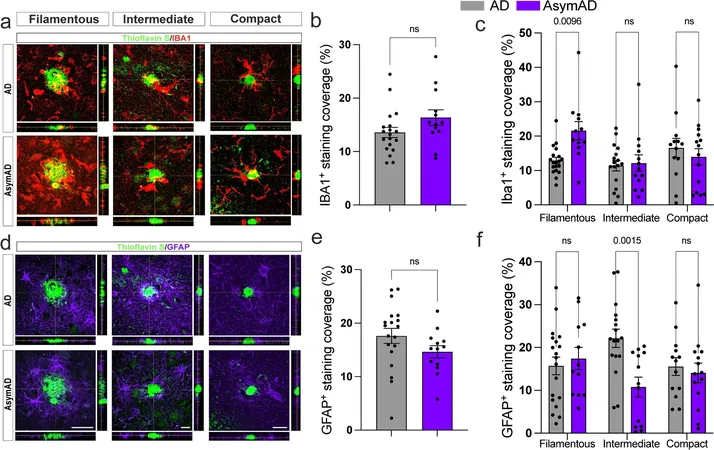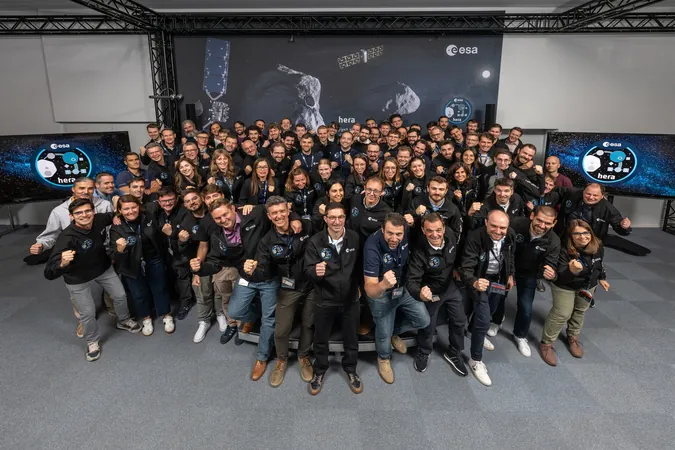
Groundbreaking Discovery: Atomic-Level Insights into Polycrystalline Materials Unveiled!
2024-10-09
Author: Arjun
Groundbreaking Discovery: Atomic-Level Insights into Polycrystalline Materials Unveiled!
In a monumental breakthrough that could reshape various industries, researchers from the University of California, Irvine, alongside international collaborators, have achieved the first-ever atomic-scale observations of grain rotation in polycrystalline materials. These materials, pivotal in electronic devices, aerospace technologies, automotive applications, and solar energy systems, have been under intense scrutiny for their fascinating properties and dynamic structures.
Advanced Microscopy Techniques Used
Utilizing cutting-edge microscopy techniques at the UC Irvine Materials Research Institute, the team heated samples of platinum nanocrystalline thin films to observe grain rotation mechanisms in fine detail. Their groundbreaking findings have been documented in a notable publication in *Science*.
Innovative Methods for Data Analysis
Employing advanced methodologies such as four-dimensional scanning transmission electron microscopy (4D-STEM) and high-angle annular dark-field (HAADF) STEM, the research team tackled the intricate challenge of analyzing vast 4D-STEM datasets. They implemented an innovative machine learning-based algorithm to distill vital information from the complex data streams. This high-tech approach allowed researchers to witness atomic processes in real-time, particularly the significant role that disconnections—flaws at the grain boundaries—play in grain rotation.
Expert Insights from Researchers
“For decades, scientists have theorized about processes occurring at the edges of crystalline grains, but now—with the aid of the most sophisticated instruments known to science—we have moved from mere speculation to tangible observation,” stated Xiaoqing Pan, a distinguished professor of materials science and engineering at UC Irvine and director of the UC IMRI.
Understanding Grain Boundaries
Grain boundaries, the crucial interfaces between individual crystalline grains, are notorious for containing imperfections that can severely affect conductivity and efficiency. The study revealed that the phenomenon of grain rotation happens through the movement of disconnections—defects that possess both step-like and dislocation characteristics—along these critical boundaries.
Statistical Correlation Discovered
This pivotal discovery provides profound insights into the microstructural evolution of nanocrystalline materials. Furthermore, the machine learning-assisted analysis revealed an unprecedented statistical correlation between grain rotation and variations in grain size, such as growth or shrinkage.
Implications for Future Technologies
The relationship hinges on shear-coupled grain boundary migration, driven by the movement of disconnections, as confirmed by STEM data and supported by atomic simulations. “Our findings offer solid, quantitative, and predictive evidence of how grains rotate in polycrystals at an atomic level,” remarked Pan, who also holds a professorship in UC Irvine's Department of Physics & Astronomy and is a Henry Samueli Endowed Chair in Engineering.
Towards Enhanced Performance of Materials
Understanding how disconnections regulate grain rotation and boundary migration could pave the way for innovative strategies to optimize the microstructures of these critical materials. This knowledge is crucial for enhancing technologies across multiple sectors, including electronics, aerospace, and automotive industries.
Conclusion: A Bright Horizon
With this groundbreaking research, the horizon looks bright for the enhancement of polycrystalline materials' performance and durability, making them even more efficient for a variety of applications! Don't miss out on the astounding potential this research holds for the future!





 Brasil (PT)
Brasil (PT)
 Canada (EN)
Canada (EN)
 Chile (ES)
Chile (ES)
 España (ES)
España (ES)
 France (FR)
France (FR)
 Hong Kong (EN)
Hong Kong (EN)
 Italia (IT)
Italia (IT)
 日本 (JA)
日本 (JA)
 Magyarország (HU)
Magyarország (HU)
 Norge (NO)
Norge (NO)
 Polska (PL)
Polska (PL)
 Schweiz (DE)
Schweiz (DE)
 Singapore (EN)
Singapore (EN)
 Sverige (SV)
Sverige (SV)
 Suomi (FI)
Suomi (FI)
 Türkiye (TR)
Türkiye (TR)